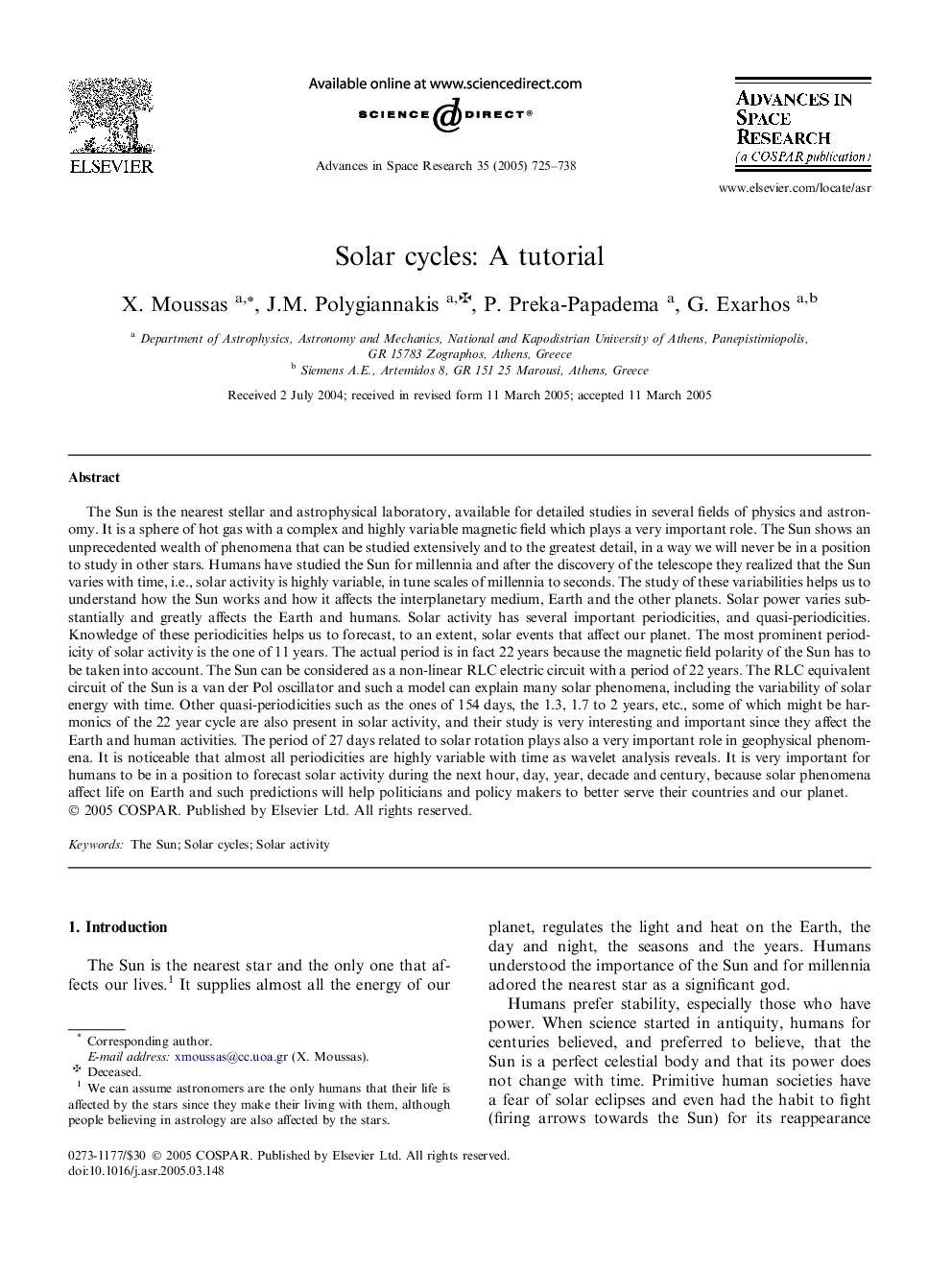| Article ID | Journal | Published Year | Pages | File Type |
|---|---|---|---|---|
| 10695072 | Advances in Space Research | 2005 | 14 Pages |
Abstract
The Sun is the nearest stellar and astrophysical laboratory, available for detailed studies in several fields of physics and astronomy. It is a sphere of hot gas with a complex and highly variable magnetic field which plays a very important role. The Sun shows an unprecedented wealth of phenomena that can be studied extensively and to the greatest detail, in a way we will never be in a position to study in other stars. Humans have studied the Sun for millennia and after the discovery of the telescope they realized that the Sun varies with time, i.e., solar activity is highly variable, in tune scales of millennia to seconds. The study of these variabilities helps us to understand how the Sun works and how it affects the interplanetary medium, Earth and the other planets. Solar power varies substantially and greatly affects the Earth and humans. Solar activity has several important periodicities, and quasi-periodicities. Knowledge of these periodicities helps us to forecast, to an extent, solar events that affect our planet. The most prominent periodicity of solar activity is the one of 11 years. The actual period is in fact 22 years because the magnetic field polarity of the Sun has to be taken into account. The Sun can be considered as a non-linear RLC electric circuit with a period of 22 years. The RLC equivalent circuit of the Sun is a van der Pol oscillator and such a model can explain many solar phenomena, including the variability of solar energy with time. Other quasi-periodicities such as the ones of 154 days, the 1.3, 1.7 to 2 years, etc., some of which might be harmonics of the 22 year cycle are also present in solar activity, and their study is very interesting and important since they affect the Earth and human activities. The period of 27 days related to solar rotation plays also a very important role in geophysical phenomena. It is noticeable that almost all periodicities are highly variable with time as wavelet analysis reveals. It is very important for humans to be in a position to forecast solar activity during the next hour, day, year, decade and century, because solar phenomena affect life on Earth and such predictions will help politicians and policy makers to better serve their countries and our planet.
Keywords
Related Topics
Physical Sciences and Engineering
Earth and Planetary Sciences
Space and Planetary Science
Authors
X. Moussas, J.M. Polygiannakis, P. Preka-Papadema, G. Exarhos,
